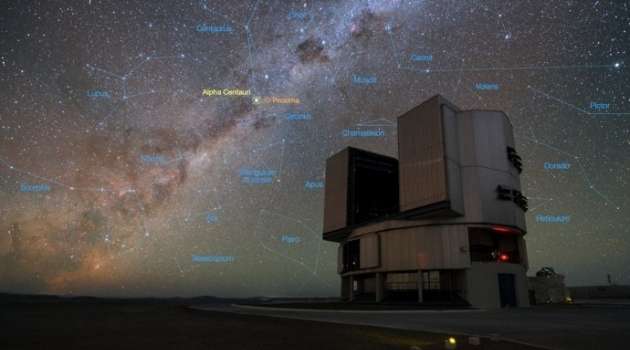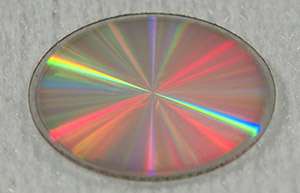Researchers produce vital component in search for earth-like planets

Researchers at Uppsala University plan to manufacture a new type of coronagraph for the VLT, the Very Large Telescope in Chile. The coronagraph is a key component of the telescope which will be used to search for planets in the neighbouring star system Alpha Centauri.
The Uppsala researchers' participation is a result of the European Southern Observatory (ESO) signing a deal with Breakthrough Initiatives for adapting the instrument of the VLT.
"Being part of the search for a potentially habitable earth-like planet is very exciting," says Mikael Karlsson, Reader at Uppsala University's unit for Applied Materials Science and in charge of manufacturing the coronagraph that Uppsala University is developing together with the Université de Liège in Belgium.
Uppsala University has already manufactured similar diamond coronagraphs and installed them in three of the world's largest telescopes: the Keck Observatory on Hawaii, the Large Binocular Telescope in Arizona and also the VLT in Chile. The new version of diamond coronagraph that is planned for the VLT's VISIR instrument will reach a new level of performance.
The coronagraph is a key component of the telescope. It is a one centimetre large transparent synthetic diamond disc with a deeply cut diffraction grating with a precision of less than a thousandth of a millimetre. Coronagraphs are used to reduce the blinding light of a star in order to reveal the weak light from any planets that surround them.

The technological development of diamond coronagraphs is done within an ERC project. The ERC contributes EUR 1.5 million to the Université de Liège and Uppsala University for this purpose.
The diamond coronagraphs are developed to reveal extrasolar planets. Observing the light from extrasolar planets is a very complicated task that can be compared to detecting the light of a firefly buzzing around a lighthouse – from 200 kilometres away.
Mikael Karlsson leads the work at Uppsala University in designing and manufacturing diamond coronagraphs for infrared light, while Ernesto Vargas Catalan, PhD student, handles the manufacturing of these highly advanced optical diamond components.
The coronagraph is based on micro-optics and consists of a diffraction grid, a pattern of parallel scores with typical dimensions of around 1 µm (micrometre) or less. The development of a manufacturing technique that could produce these diamond micro-structures was started nine years ago, and the first diamond coronagraph was produced five years ago. The manufacturing technique is still being improved, in order to produce even better diamond coronagraphs. By installing these coronagraphs in future extremely large telescopes and space telescopes, astrophysicists hope to discover and describe potentially habitable extrasolar planets.
Provided by Uppsala University




















